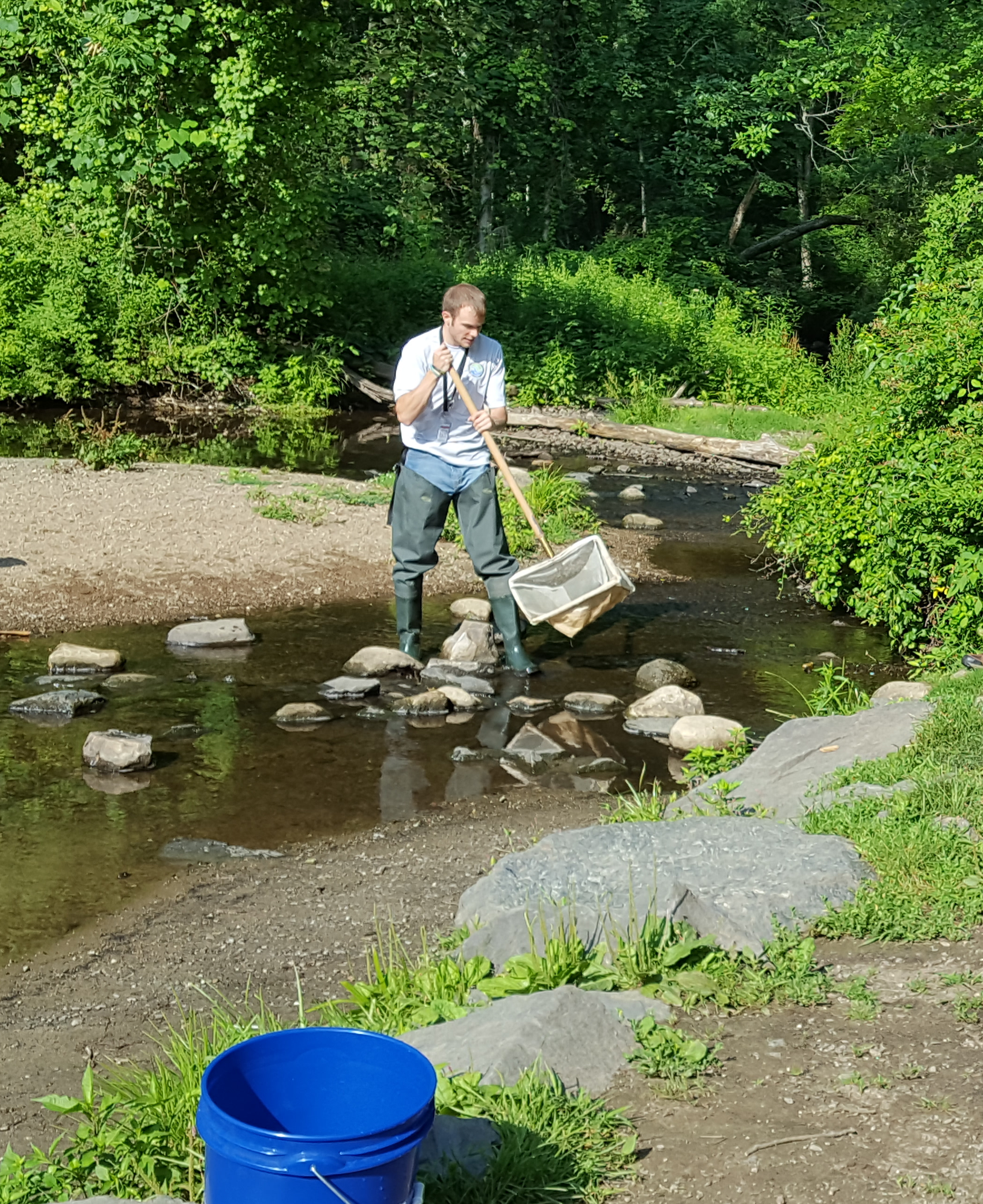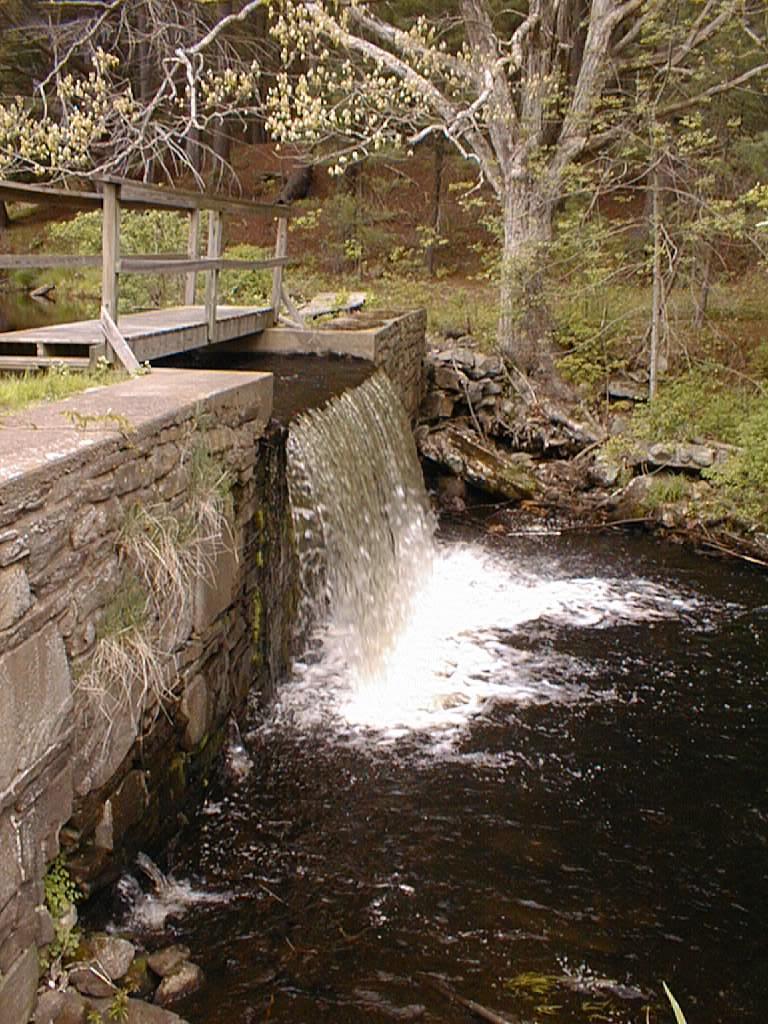In This Issue: - DEC Launches NYHABS for 2021: New York Harmful Algal Blooms Notification and Reporting System
- Volunteer for WAVE Stream Sampling
- Chesapeake Bay Final Amended Phase III Watershed Implementation Plan
- Dam Safety Awareness Day is May 31
- Draft 2021-2025 Hudson River Estuary Action Agenda Available for Comment
- Acquisition of Easement Will Help Protect City of Ithaca's Water Supply
DEC Launches NYHABS for 2021: New York Harmful Algal Blooms Notification and Reporting System 
DEC is, once again, using an online Harmful Algal Blooms (HABs) map and reporting system to inform the public about HABs locations in New York. Dubbed "NYHABS," the reporting system features an interactive map that is updated daily with reports of HABs. DEC is asking the public and trained algal bloom samplers to send reports of HABs with photos electronically via a simple, mobile phone-friendly form. After DEC and Department of Health (DOH) evaluate the reports, they are posted to NYHABS. When it comes to HABs, DEC encourages New Yorkers to: - Know It – HABs vary in appearance from scattered green dots in the water, to long, linear green streaks, pea soup or spilled green paint, to blue-green or white coloration.
- Avoid It – People, pets and livestock should avoid contact with water that is discolored or has algal scums on the surface.
- Report It –The public should report a suspected HAB through the NYHABs online reporting form available on DEC's website. Report health concerns related to HABs to DOH at harmfulalgae@health.ny.gov, or contact your local health department.
Most algae blooms are harmless. However, exposure to toxins and other substances from certain HABs can make people and animals sick. For more information about HABs, visit DEC's Harmful Algal Blooms (HABs) webpage. You can download the HABs brochure and program guide - which includes information and links to resources regarding bloom prevention, management and control - from the webpage.
Volunteer for WAVE Stream Sampling 
The WAVE citizen science sampling season is fast approaching, and you can take steps now to participate. WAVE (Water Assessments by Volunteer Evaluators) is a DEC program where volunteers collect "stream bugs" to measure water quality in wadeable streams. Anyone who can kick over a rock can participate. The sampling season is from July to September. Follow these steps to get involved: - Read the WAVE Sampling Guide to find out what is involved and how to choose a location.
- Select a sampling location. DEC's Division of Water suggests the areas highlighted on this map of unassessed streams, but samples from any stream with appropriate habitat will be accepted. Use the interactive WAVE Site Submission Tool to submit sampling locations.
- Get trained in the WAVE method using online materials and videos.
- Find a WAVE team near you. Send the names of at least three teams you would like to contact to: wave@dec.ny.gov. Note, you may also participate as an individual not connected to a team.
- Sign the WAVE Waiver to participate.
- Apply for kick nets and sample vials through the WAVE Site Submission Tool by June 15. You can also build your own net.
- Join the WAVE listserve to stay informed by entering your email address in the blue "DEC Delivers" box on the WAVE webpage.
- New in 2021: Digital Field forms for submitting paperwork right on your phone.
Chesapeake Bay Final Amended Phase III Watershed Implementation Plan On May 25, 2021, DEC submitted the Final Amended Phase III Watershed Implementation Plan (WIP) for the Chemung and Susquehanna River Basins for the Chesapeake Bay Total Maximum Daily Load (TMDL) to the Environmental Protection Agency. The public can view the final plan and appendices on DEC's Chesapeake Bay Watershed Program webpage. The Chemung and Susquehanna River basins form the northern headwaters of the Chesapeake Bay and cover much of New York's Southern Tier.
Dam Safety Awareness Day is May 31 
May 31 is National Dam Safety Awareness Day. On this day, we remember the lessons learned from past dam failures and rededicate ourselves to the effective public-private partnerships that work to keep America's dams safe, operational and resilient. The issue of dam safety was recognized nationally in 1889 when the failure of South Fork Dam near Johnstown, Pennsylvania, claimed more than 2,200 lives. DEC encourages you to understand the importance of properly operating and maintaining dams in preventing loss of life and economic and environmental damage. Commemorate Dam Safety Awareness Day by learning more about New York's dam safety program and DEC's role in dam oversight.
Draft 2021-2025 Hudson River Estuary Action Agenda Available for Comment DEC has released the draft Hudson River Estuary Action Agenda 2021-2025, a five-year blueprint for conserving and restoring the Hudson River estuary and its watershed. DEC is accepting public comments on the draft through July 9, 2021. In addition, DEC released the 2015 - 2020 Hudson River Estuary Program Coordinator's Report, which provides the context for the strategies and actions outlined in the draft Action Agenda.
Acquisition of Easement Will Help Protect City of Ithaca's Water Supply DEC and Finger Lakes Land Trust (FLLT) have announced the acquisition of a conservation easement on 126 acres in the town of Caroline in the Six Mile Creek Watershed as part of New York State's Water Quality Improvement Project (WQIP) Program. DEC awarded FLLT more than $641,000 in a WQIP grant for this and other projects in the Six Mile Creek Watershed to help protect the city of Ithaca's public drinking water supply. The acquisition adds to a previously acquired conservation easement of more than 13 acres in the town of Dryden that was also supported by this WQIP grant. | 


No comments:
Post a Comment